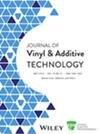Production, characterization and life cycle analysis of ZnO doped LDPE films
Abstract
In this study, virgin and recycled polymer films doped with ZnO in different proportions were prepared by extrusion. ZnO was first incorporated into LLDPE to produce masterbatches, which were then added to LDPE at a 10% ratio to fabricate the composite films. The produced films were analyzed using FTIR, SEM, TGA, DSC and tensile tests to evaluate their optical, thermal and mechanical properties. In addition, a life cycle assessment was carried out for each film and the environmental impacts were compared. A functional unit of 1 kg of film was selected and the process from raw material extraction to film production was analyzed in detail using the cradle-to-gate model. The findings indicate that the recycled film produced with 1% ZnO addition exhibits superior optical and thermal properties, high tensile and break strength, and offers positive environmental benefits. Therefore, recycled film produced with 1% ZnO additive was considered the most sustainable and suitable option for bag production.
Highlights
- Virgin and recycled polymer films were doped with ZnO and produced.
- Films' optical, thermal, and mechanical properties were studied.
- The 1% ZnO doped recycled film exhibited high optical and thermal properties.
- LCA show 1% ZnO doped recycled film is the optimal sustainable product.





 求助内容:
求助内容: 应助结果提醒方式:
应助结果提醒方式:


